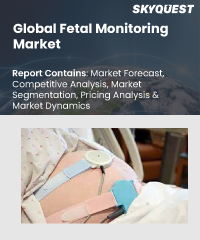
Report ID: SQMIG35D2193

Report ID:
SQMIG35D2193 |
Region:
Global |
Published Date: October, 2024
Pages:
157
|
Tables:
89 |
Figures:
76
Fetal Monitoring Market Drivers
Increasing Prevalence of Preterm Birth
Increasing Average Age of Conceiving Leading to Complications
Fetal Monitoring Market Restraints
High Expense of Fetal Monitoring Devices
Increasing Demand for Refurbished Products
Our industry expert will work with you to provide you with customized data in a short amount of time.
REQUEST FREE CUSTOMIZATIONWant to customize this report? This report can be personalized according to your needs. Our analysts and industry experts will work directly with you to understand your requirements and provide you with customized data in a short amount of time. We offer $1000 worth of FREE customization at the time of purchase.

Report ID: SQMIG35D2193